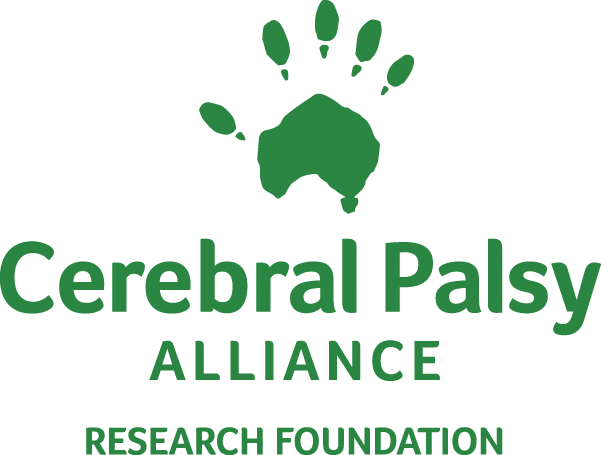Spastic cerebral palsy is the most common type of cerebral palsy. The muscles of people with spastic cerebral palsy appear stiff and their movements may look stiff and jerky.
- Muscles appear stiff because the messages to the muscles are sent incorrectly through the damaged part of the brain
- When a muscle is affected by spasticity, the faster the limb is moved, the stiffer it seems
- Spasticity arises as a result of damage to bundles of neurons in the brain and spinal cord called the corticospinal tracts and corticobulbar tracts
- Spasticity is seen in a number of different conditions including cerebral palsy, traumatic brain injury, spinal cord injury, stroke and multiple sclerosis
- People may have difficulty moving from one position to another and controlling individual muscles or muscle groups needed for performing certain tasks like handling objects or speaking
What causes spasticity?

What does spasticity look like?
Spasticity may affect any muscle group in the body however there are some common patterns that are seen in cerebral palsy.
Effect on the upper limbs (arms and hands)
If spasticity affects one or both of the arms it can lead to:
- Flexion at the elbow (the elbow is bent)
- Flexion at the wrist (the wrist is bent)
- Flexion at the fingers (the fingers are fisted)
Spasticity in these areas can lead to difficulties with tasks involving the hands and the arms:
- getting dressed
- washing and toileting oneself
- eating or drinking
- writing
- manipulating objects
It may also affect a person’s ability to use their arms for balance which can lead to difficulty standing and walking.
Effect on the lower limbs (legs)
If spasticity affects one or both of the legs it can lead to:
- Flexion at the hip (which causes the leg to lift upwards when lying or the body to lean forwards in standing)
- Adduction or ‘scissoring’ of the thighs (which causes the legs to pull together)
- Flexion at the knees (causing changes in a person’s standing posture)
- Equinovarus foot posture (where the toes point downwards and inwards with the heel off the ground – this results from tightness in the calf muscles)
- Hyperextension of the big toe (where the toe is pulled upwards and backwards towards the shin)
Spasticity in the muscles of one or both legs may affect a person’s ability to
- Stand upright
- Sit upright
- Transfer from one position to another
- Move and reposition in bed
- Walk and run
Effect on speech
Spasticity can also be present in smaller muscles or muscle groups such as the tongue, facial muscles or vocal folds.
Spasticity in these areas can result in:
- Slow oral movements that are imprecise and require a lot of effort (eating and drinking may also be affected)
- Speech sounds that are slurred
- A voice that might sound hoarse or tight
This can impact a person’s ability to communicate using speech and may mean that alternative methods of communication (such as pictures, symbols or voice generating devices) are used.
What can change over time?
Although the damage to the brain that causes spasticity does not change over time, the effects of spasticity on the body can result in changes.
Effects of spasticity over time:
- Changes in soft tissues (muscles, tendons and ligaments) leading to muscle stiffness, atrophy (deterioration or wasting of the muscle) and fibrosis (changes in the properties of the muscle fibres)
- Muscles that are affected by spasticity have difficulty stretching out to keep up with bone growth – resulting in muscles that are shorter than they should be. This prevents a joint achieving its normal full range of movement and is called a contracture.
- Shortened, contracted muscles can pull on the bony structures of the body leading to bone deformities such as scoliosis of the spine and hip dislocation.
- Pain – persistent overactivity in spastic muscles can cause pain in the muscle. Pain can also occur as a result of changes in the joint position and deformities due to the abnormal pull of the spastic muscle.
How is spasticity assessed?
An accurate and comprehensive assessment is important in determining the presence, severity and impact of spasticity. It is also important in evaluating an individual’s response to spasticity management intervention.
When assessing spasticity, a clinician will assess
- Which muscles are affected by spasticity
- How severe is the spasticity in each of the affected muscles
- How is the person able to control their muscles (can they activate individual muscles, can they voluntarily control their muscles to perform functional tasks)
- Are there any secondary effects of spasticity (such as contracture) which are affecting the person’s ability to perform functional tasks.
It is also important to identify the presence of other types of hypertonia – increased muscle tone – (dystonia and rigidity) and differentiate these from spasticity.
Therefore a clinician will most likely perform
- A clinical examination involving ‘hands on’ feeling for stiffness when moving a limb, measurement of range of movement of the joints, as well as strength, and
- A functional assessment which will include observation of the person performing daily activities in a natural environment with or without the user of equipment or other aids (eg bathing, dressing, sitting, walking, climbing stairs)

